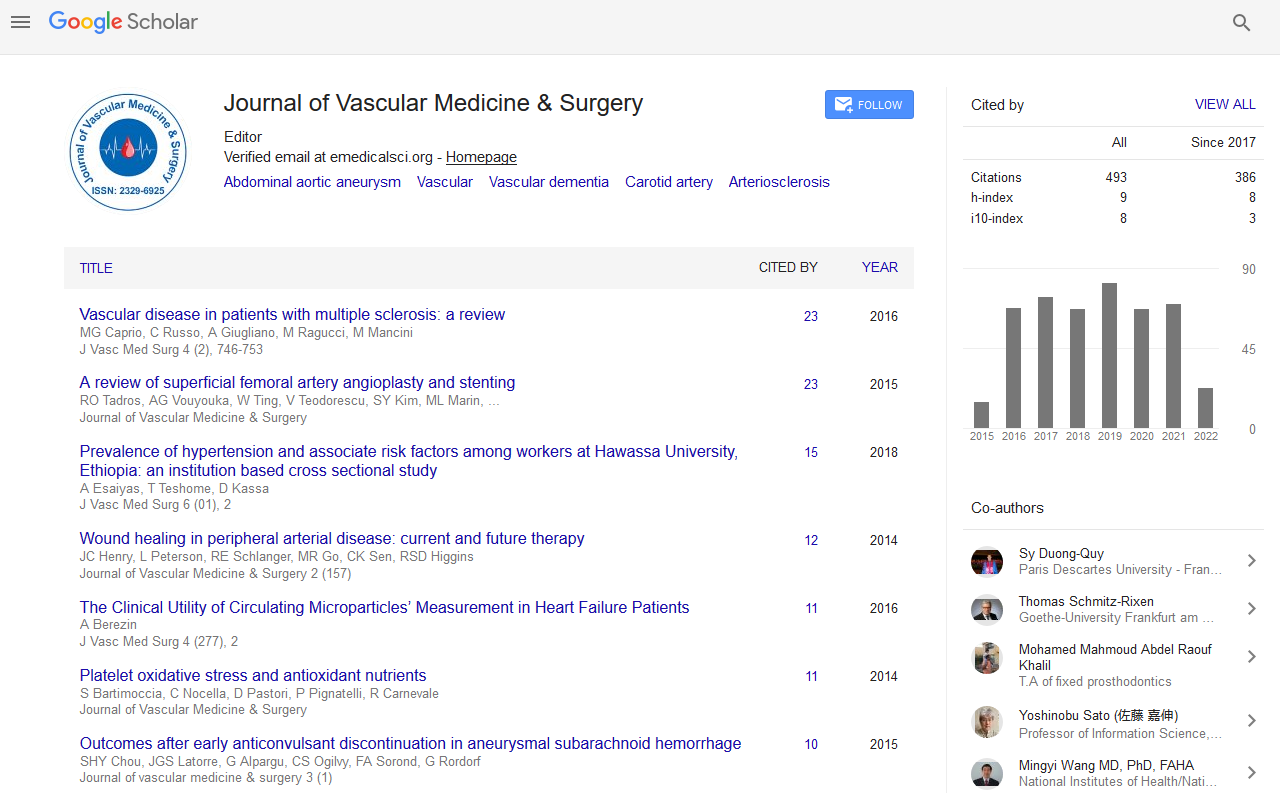Indexed In
- Open J Gate
- Academic Keys
- RefSeek
- Hamdard University
- EBSCO A-Z
- OCLC- WorldCat
- Publons
- Euro Pub
- Google Scholar
Useful Links
Share This Page
Journal Flyer

Open Access Journals
- Agri and Aquaculture
- Biochemistry
- Bioinformatics & Systems Biology
- Business & Management
- Chemistry
- Clinical Sciences
- Engineering
- Food & Nutrition
- General Science
- Genetics & Molecular Biology
- Immunology & Microbiology
- Medical Sciences
- Neuroscience & Psychology
- Nursing & Health Care
- Pharmaceutical Sciences
Aortic reflected waves: The importance of wave separation analysis in cardiovascular risk prediction
World Congress on Vascular Diseases, Medicine & Surgeons Summit
October 24-25, 2016 Chicago, USA
Gavin Robert Norton
University of the Witwatersrand, South Africa
Scientific Tracks Abstracts: Vasc Med Surg
Abstract:
Although pulse pressure (PP) is a well-recognized predictor of cardiovascular outcomes beyond steady-state pressures, aortic PP may be markedly lower than brachial PP. There is increasing evidence that aortic PP associates with cardiovascular damage independent of brachial PP, but an explanation for this finding is a topic of continuous debate. Although aortic reflected (backward) waves contribute numerically less than forward (incident) waves to aortic PP, there is increasing evidence that backward waves largely determine the brachial BP-independent relations between aortic PP and cardiovascular damage. Furthermore, the impact of backward waves on aortic PP and cardiovascular end-organ changes cannot be accurately determined by augmented pressures (or augmentation index) obtained from simple pulse wave analysis. Rather current evidence suggests that aortic backward wave amplitudes should be acquired from wave separation analysis in order to accurately identify the impact of backward waves on aortic PP and cardiovascular end-organ changes. In this regard, large cross-sectional studies, outcome-based studies and intervention studies all point to a need for wave separation analysis as being superior to simple pulse wave analysis (augmented pressures or augmentation index) when identifying the impact of backward waves and the timing of the forward wave on aortic PP and end-organ changes. Although wave separation analysis is ideally derived from simultaneous aortic pressures and velocity measurements, simple, quick, easy to use, and valid non-invasive approaches to obtaining backward wave pressures are presently available for clinical use. This opens the possibilities of risk predicting and modifying antihypertensive therapy based on backward wave pressures.
Biography :
Gavin Robert Norton (MD, PhD) is an ad Hominem Full Professor in School of Physiology and the Founder and Co-Director of the Cardiovascular Pathophysiology and Genomics Research Unit at the University of the Witwatersrand (WITS). He has over 150 original publications, predominantly in leading international cardiovascular journals, which have emanated in at least 11 editorial commentaries and a total of 3586 citations to-date. Hence he has a h index of 35. He completed his MD in 1987 and PhD in 1993 at WITS, a fellowship at University of Masachusetts in 1997 and was recipient of the prestigious Vice-Chancellor’s Research Award at WITS in 1998.
Email: Gavin.norton@wits.ac.za


